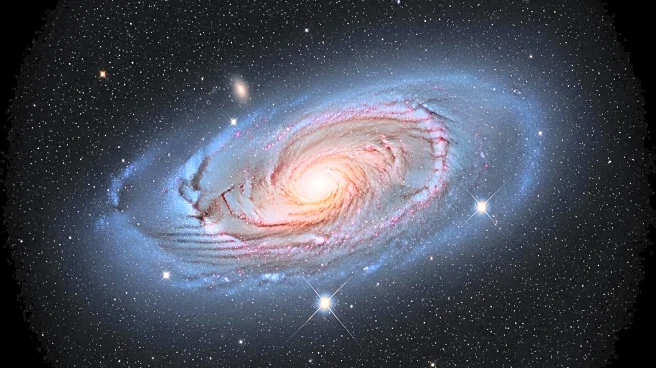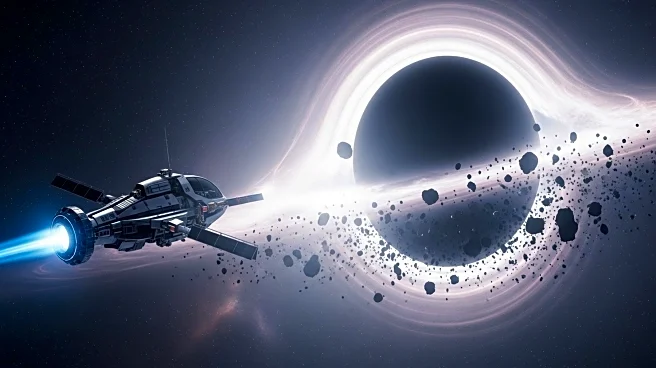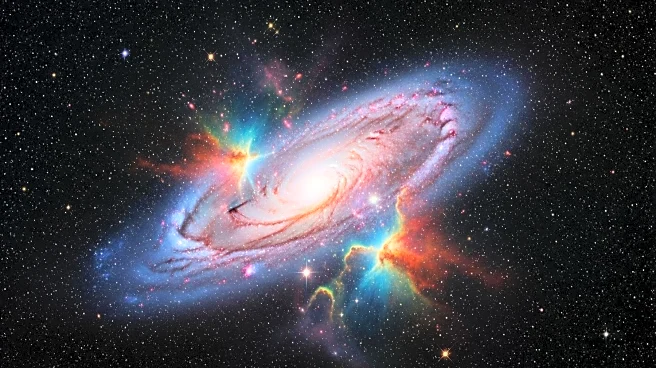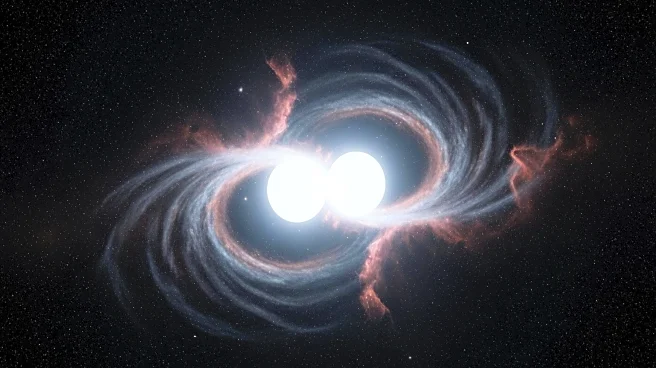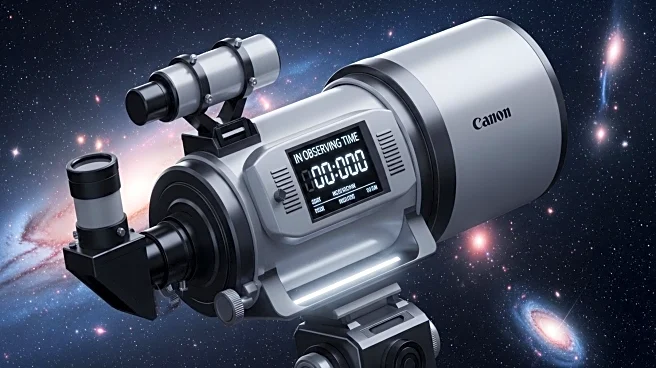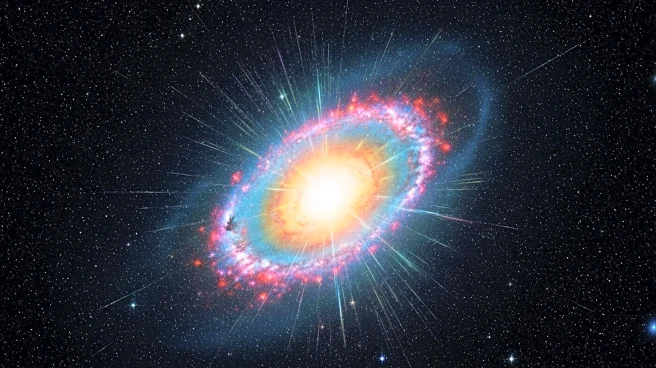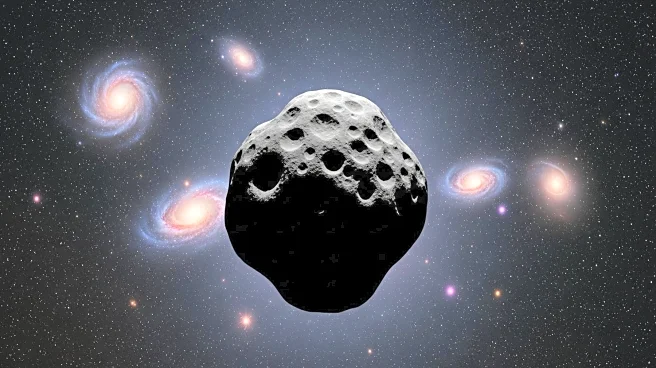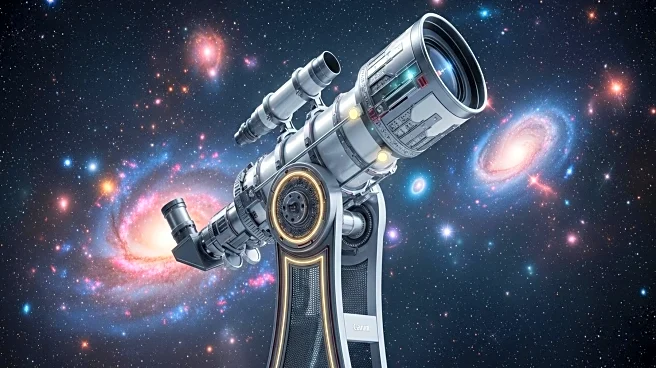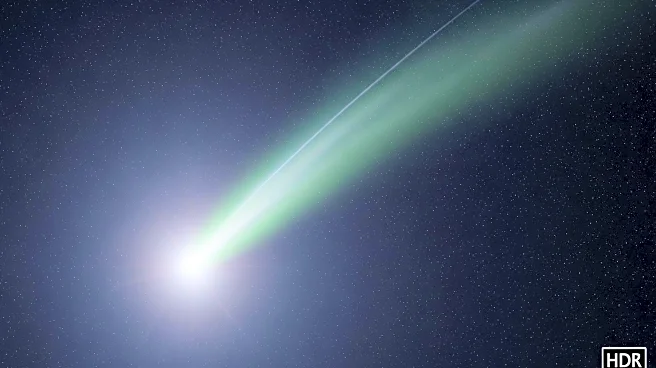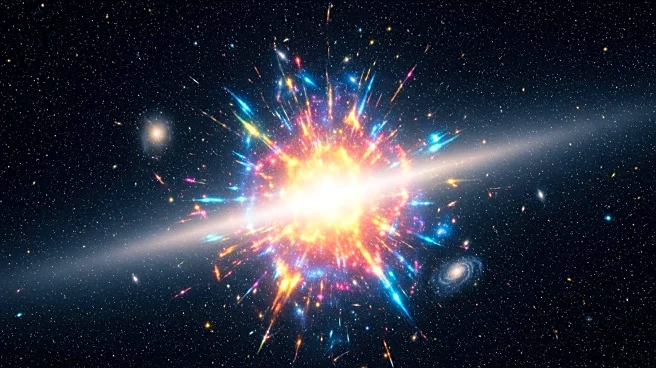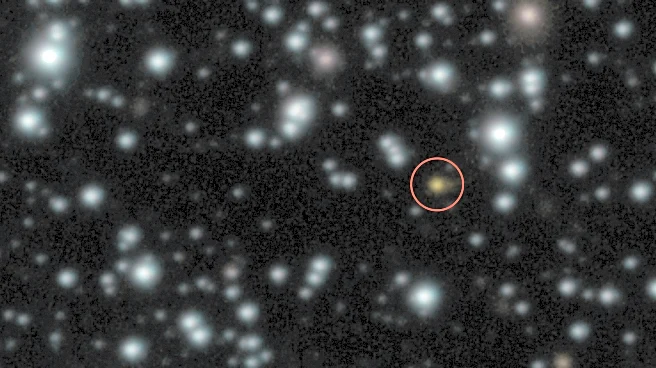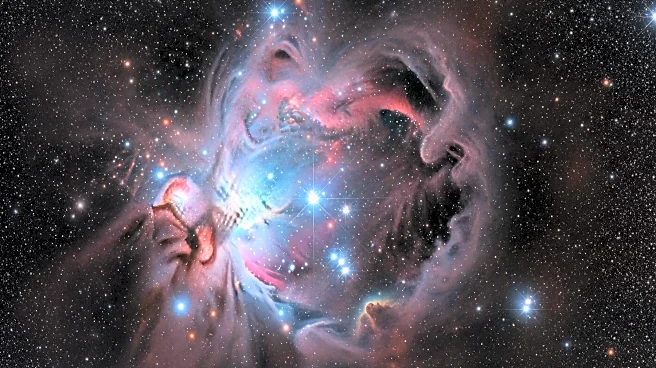What is the story about?
What's Happening?
The Hubble Space Telescope has captured a detailed image of the spiral galaxy NGC 7456, revealing its vibrant star-forming regions and active galactic core. Located over 51 million light-years away in the constellation Grus, the galaxy's spiral arms are rich with dust, obscuring the stars behind them. The pink areas in the image indicate regions of gas where new stars are forming, glowing red due to ultraviolet light from young stars. The European Space Agency's XMM-Newton X-Ray observatory has also studied NGC 7456, identifying ultraluminous X-ray sources within the galaxy, which remain a mystery in astronomy.
Why It's Important?
NGC 7456 serves as a cosmic laboratory for astronomers to study star formation and the recycling of gas into new generations of stars and planets. The presence of ultraluminous X-ray sources offers insights into the physics of compact objects emitting high levels of X-rays, contributing to the understanding of galactic dynamics. This research enhances knowledge of how galaxies evolve and the processes that drive star formation, which are fundamental to understanding the universe's structure and development.
AI Generated Content
Do you find this article useful?
